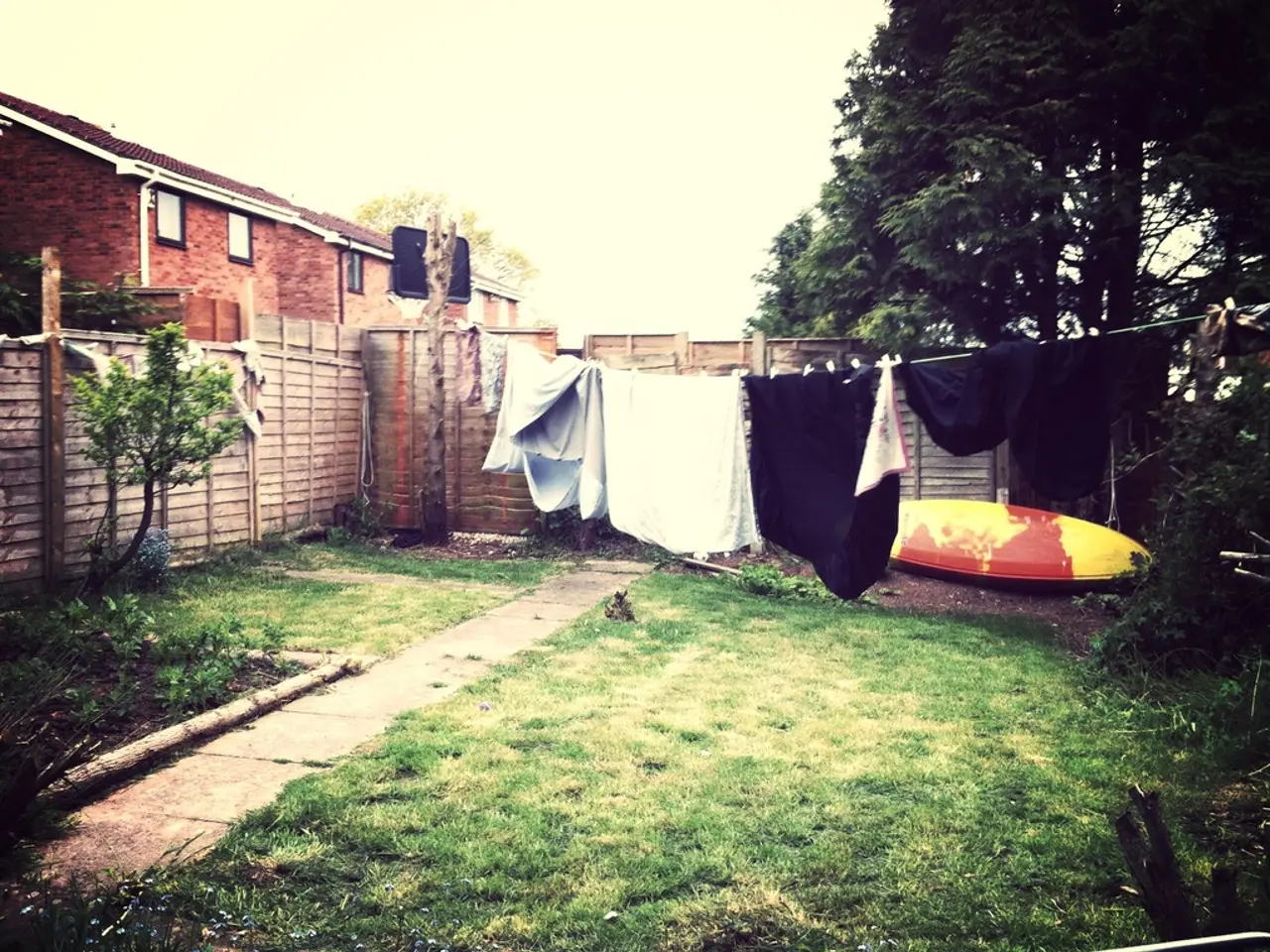Instructions on Hedgelaying: A Guide to Maintaining Borders
In the heart of the British countryside, a centuries-old craft continues to thrive: hedge-laying. This ancient skill, used for creating living fences, varies by county and reflects local materials, landscape, and historical farming practices.
Some of the well-known traditional county styles of hedge-laying include:
- Somerset (West Country) style: Characterised by a steeply angled lay with stakes and binders woven tightly along the length to create a dense barrier, often seen in West Country counties like Somerset.
- Cotswold style: Typically more upright, with trees and shrubs partially laid and partially left growing upright to maintain a taller hedge suitable for sheep grazing.
- Derbyshire style: Features a more formal and upright hedgerow with stakes fixed at a sharp angle into the base and pleachers (laid stems) bent tightly against them.
- Yorkshire style: Generally involves a shallower lay with stakes driven almost vertically and pleachers laid over to create a tidy finish.
- Breconshire (Wales): Traditional methods described from the 18th century involved planting quicks (young thorn plants) centrally on a bank with ditches on either side, forming a hedge foundation; later hedge-laying adapted to local topography and plant availability.
Each style is adapted to local conditions such as the type of wood (hawthorn, blackthorn, beech), the purpose of the hedge (stock-proofing, boundary marking), and agricultural needs. Hedge-laying preserves biodiversity and traditional landscapes by maintaining old hedgerows with species-rich mixes rather than formal monoculture hedges.
The Nottinghamshire pattern billhook is smaller than the Yorkshire pattern and offers a well-balanced blade and handle. Traditionally, a billhook is used for cutting through stems and branches in hedge laying. For larger stems, the Yorkshire billhook is preferred by many professional hedge layers. When cutting into the stem, slice down at an angle just above ground level.
Pruning saws are ideal for cutting down cleft stumps in hedge laying. To lay a hedge, first remove lower side branches using loppers. Lay the stems along the length of the hedge, but avoid making them completely horizontal. Add strength and stability to the hedge by driving in upright stakes at intervals of around 50cm. Bind the stakes together using flexible hazel rods, known as binders, heathers, or weavers.
The annual National Hedge Laying Championship showcases the skill involved in hedge-laying with over 100 competitors. For more precise technical illustrations or county-specific dialect and tools, specialized texts on hedge-laying from heritage countryside or agricultural bodies would be recommended.
The Welsh Border method uses hazel stakes that are sometimes driven in at a 35-degree slant. Materials for hedge-laying, such as hazel and ash for stakes and bindings, can be easily sourced during this time. The Midland style, also known as the bullock style, is used for hedges that need to withstand the weight of large animals.
Hedge laying is done when trees and shrubs are dormant and birds have finished nesting. The Kent pattern billhook has a deeper blade than the Berkshire pattern and is useful for working at the bottom of a hedge. The South of England style hedge is cut and laid over to create a double brush on both sides.
Laying a hedge encourages new growth and can regenerate an old, overgrown hedge without replacement. The Devon style hedge is laid on top of a bank and the pleachers are laid closer to the horizontal. The original aim of hedge laying was to prevent livestock from straying.
The Spar hook is a light and slim tool used by both hedge layers and thatchers. The Yorkshire style uses sawn stakes and rails to finish the hedge. The Devon style hedge is pegged down with crooked hazel sticks. French loppers are ideal for removing side branches in hedge laying.
Hedge laying is a seasonal job carried out between October and March. The Somerset style uses a row of stakes that are driven in alternately on either side of the hedge. The National Hedge Laying Society provides information on courses and details of professional hedge-layers.
References: [1] Hedge Laying: A Practical Guide. (2018). The National Hedge Laying Society. [3] Hedge Laying: A Traditional Craft for Biodiversity. (2020). The Wildlife Trusts.
- The traditional Devon style hedge, laid on a bank with pleachers closer to the horizontal, is commonly found in the southwest region of England and encourages new growth, renewing overgrown hedges without the need for replacement.
- In the Midlands, the bullock style, or Midland style, of hedge-laying is employed for hedges needing to sustain the weight of large livestock, creating sturdy and durable barriers.
- Gardens incorporating traditional hedgerows can provide diverse habitats for various plants, wildlife, and contribute to the preservation of local landscapes, thereby enhancing one's home-and-garden lifestyle and appreciation for gardening.




